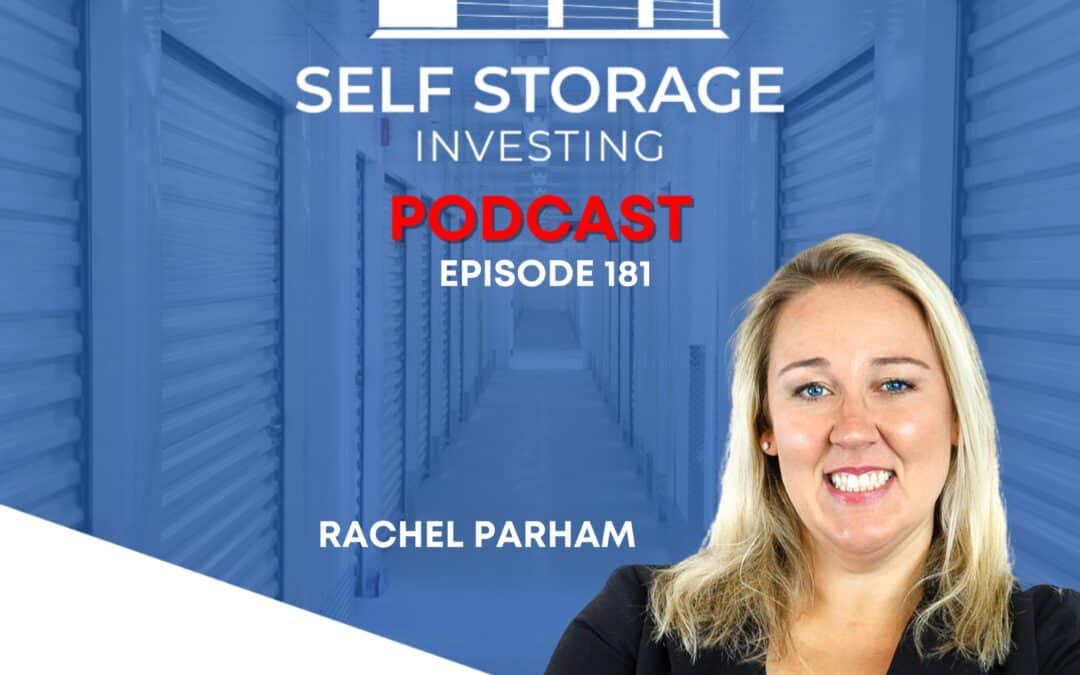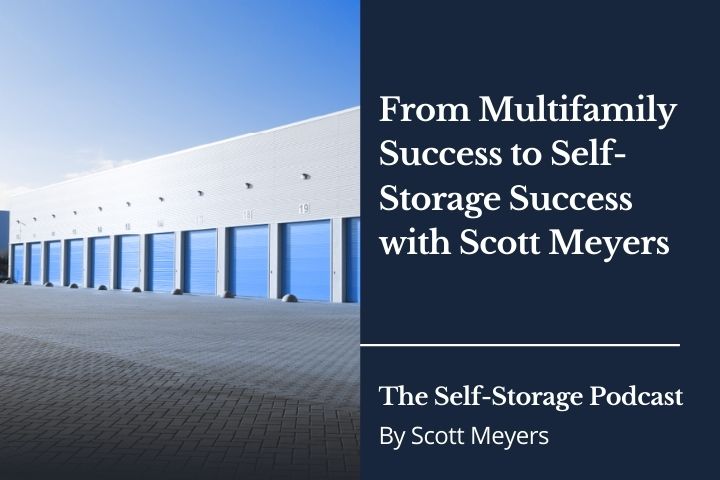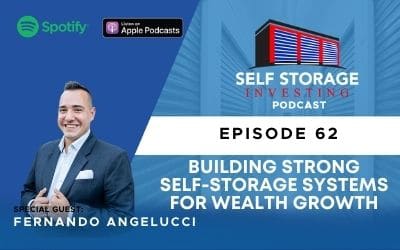It was all about cold calls in the early days.
Rachel Parham of Noah’s Ark Development remembers her dad making call after call to manage a portfolio of over 400 facilities.
Nothing wrong with good, honest, nose to the grindstone hard work. And it paid off. Rachel emphasizes the importance of due diligence, market studies, and experienced partnerships while discussing the challenges and opportunities in today’s market.
WHAT TO LISTEN FOR:
05:14 – A Family Affair
15:37 – Strategic Site Selection
18:27 – Adapting to Market Demands
24:00 – The Power of Technology
Leave a positive rating for this podcast with one click
GUEST: RACHEL PARHAM | President Noah’s Ark Development
Website | Facebook | Learn Self Storage Videos | Blog | Invest in Noah’s Ark
CONNECT WITH US
Website | You Tube | Facebook | X | LinkedIn | Instagram
Follow so you never miss a NEW episode! Leave us an honest rating and review on Apple or Spotify.
Episode Transcript
Rachel Parham (00:00):
My mom and dad, they wanted to offer the one resource in self-storage. They use that statement a lot, providing that one resource. That means that we’re managing the asset. We’re not just leaving it up to the third parties. It’s because you’re right, they’re not going to care like we care.
Announcer (00:22):
This is the Self-Storage Podcast where we share the knowledge and skills from the industry’s leading investors, developers, and operators to help you launch and grow your Self storage business. Your host, Scott Meyers, over the past 18 years has acquired, developed, converted and syndicated nearly 5 million square feet of Self storage nationwide with the help of his incredible team@Selfstorageinvesting.com, who has helped thousands of people achieve greatness in Self storage.
Rachel Parham (00:56):
Hello everyone, and welcome back to the Self-Storage Podcast. I am your host at Scott Meyers and on today’s episode we have a special guest in the house, Rachel Parham, with Noah Ark Development, and we’re going to be talking about all things development of all things, and we haven’t been talking too much about that in today’s economy. But yes, builders are still building. We are still building. We have a number of projects that we are converting right now as well as some ground up. And so I wanted reach out to a few other folks in the industry that have not put their pencils down and have not put their shovels down and are still building self-storage. So with that, Rachel, welcome to the show.
Rachel Parham (01:31):
Thank you, Scott. I’m glad to be here.
Rachel Parham (01:35):
So good to see you again and I’m thankful that our booths were next to each other. We were neighbors at the ISS show in Vegas this year to be able to catch up and have a conversation and long overdue that we sat down and had a longer conversation to see how we can help each other in the industry. But good to hear that obviously things are going very well for you. I’ve been following your company since I got into self-storage. Your company and everything that your mom and dad have built, you’re just very well respected in the community. Everybody has nothing but glowing things to say about you. You are just the pillars and now you have continued to carry that tradition on. So I’m thankful to have you here and I would like to know a little bit more about the genesis of the entire company from your mom and dad and to now what you’re doing as you take the baton and lead it into the next steps.
Rachel Parham (02:27):
I have a great foundation. That’s the biggest part about I think this family. We started self-storage in 1986. My dad was actually working for Hendry Investments in San Antonio and decided he was the VP of their self-storage construction department, and then he branched off and started National Development Services, which is now NDS Construction, and that started in 1986 and in that same year he had his first daughter and that was me. So when I say that I grew up in self-storage, I really grew up in, I have been here since we started when my dad made 2000 cold calls, had his first contract, met with the guy when he was changing airplanes at the San Antonio airport. Met him at the airport and sold him at the first deal and had three first facilities. My dad was huge on the sure guard, self-storage, any self-storage, either lighthouse.
(03:17):
My dad was very much involved with that in building those across the country. We have over 400 facilities across the country and 36 of our own brand. Noah’s Ark, which we started in 1997, and that’s when my mom joined the team and she started the management company, which is Joshua Management and Noah’s Arc development was also started in that same year. So our first facility we still own, it’s in Verde, Texas. It started out with 30,000 square feet. We have had three phases. It’s now at 79,000 net rentable and 98% occupancy, and we own a hundred percent of it and that’s where I’m sitting right now is in our corporate office here where all of the companies are housed and it’s been great. I could not have asked for a better, I guess childhood life. Being a part of this industry has been huge. I’ve known all of the players since I was born.
(04:06):
It feels like I’ve been going to trade shows since I was born and even to Vegas trade shows, got to see shows and stuff like that, and it was a lot of fun and just getting to have that background and also the responsibility of doing things ground up and the quality, that was a huge thing for my family was that they wanted to, they’re building businesses. This needs to be a top quality a in every market, and that can mean anything. That can mean some of just a hundred percent steel. There’s no rockery masonry or anything like that on the buildings, but it’s still the A in that market and doing their research and making sure that they had the right place, the right piece of property, and that there was a demand for self storage and making sure they did all their research. My first project, I was 16 and it was in Florida and it was a Noah’s Ark and I did my first market study, and that was back before we had even aerial maps or Google. We had to do a lot of phone calls. We had maps hanging on the wall. We did a lot of push pins in the map, but we’ve been doing this for so long and it’s awesome to see how the industry has grown, how it’s changed to see all the new players involved. But it’s been awesome. I’ve loved it and I love working with my family. That’s the best part.
Rachel Parham (05:14):
This industry we see a lot more and I don’t know how much is a percentage we could compare to other industries, but my gosh, this is an incredible industry to have a legacy business that has passed down from generation to generation. So you absolutely had a leg up by growing up in it, but were off looking to do something on your own until dad called you back and brought you back into the fold. And obviously the entire industry grieved and mourned his loss. But what was that like then when you came back in and you were at the mantle and then all of a sudden your confidant, your mentor was not there to ask any and all questions even though you didn’t have to ask as many at this, but what have things looked like since then? Since now it’s not you and your mom and brother and the rest of the folks carrying on that legacy. That’s got to be just an incredible place to be able to still honor him and carry that on.
Rachel Parham (06:08):
My dad was huge about educating people, not just his own family and us in this business, but educating every client, every investor, anyone that was interested about being in this industry, he wanted to tell them everything about it and he could talk for hours and hours and hours. I’m kind of the same way. My mom likes to joke that I’m like the female 30-year-old Mike Parham, and she’s like, I’ve already lived this life. I’ve already seen this go on. I’ve already seen what you’re going to do and how you act. And it was so awesome that my dad called me and I was living in DC at the time and I was kind of like, okay, what am I going to do next in my career? I don’t want to be in politics. I have a background in construction, engineering and development. And he called me back and he said, you know what?
(06:51):
I think I want to retire one day. I would like for you to be involved in this. And I was like, okay, you know what? I have a huge background in it. I’ve been a superintendent for you before we can work together. And it was awesome to come back and at least have that year and a half, almost two years with him. But when he passed away, it was, I could not have done this. I don’t think it would’ve been as easy of a transition and it wasn’t easy. But having my mom here, that was huge. The fact that we have this is a family business and that we’ve all been involved in it for so long. My brother runs the management company now. It’s pretty incredible that we had that support. And all of the people that work for my family, they stayed. They were there the next morning.
(07:35):
We didn’t lose one client. We moved forward with our investors. We built two more Noah’s Arks after that. We were really excited about it. Doing a lot of third parties at the time, sold two portfolios during that timeframe too, since he passed away. But yeah, I always felt like, okay, I’m ready to take the torch and move forward, but having the background that I have and the foundation that I can start off on as the biggest blessing, and I had so many people here that my dad had educated and who loved my family, and it really is a family community here. They helped me, they taught me, they taught me things I didn’t realize before with construction and the management side of it. And I just spent a lot of years learning, and there’s a lot of trial and error, error on things, but my dad used to wear a pen that said, ask me how I know that at trade shows.
(08:26):
And I get that now. It’s like, yeah, I already made that mistake. I don’t want you to make that mistake. We want to get better and better. And now I totally understand why he wore that and he would say that all the time because it’s so true. But it’s been awesome. We’re expanding the Noahs Ark brand. We’re really excited about that. We’ve got several great opportunities coming up that we’re really excited about. And I know this economy is not great, but we’ve kind of seen this before. But yeah, I’m very blessed. That’s the biggest part about it. And I have great people around me and I want to continue the legacy of educating people and to get excited about this industry because it’s a great industry to be in. It’s one of the best actually. So yeah, I
Rachel Parham (09:12):
Would agree. And we’ve been the benefactor of so many families. Well, I guess you’d start with the individuals that bought or developed a facility or a handful and then they got to a place where they were ready to retire and move on or they had passed away and the kids, those that received the inheritance from mom and dad or dad, they decided not to go into the business and they either sold it off or they left it with mom and she didn’t know what to do. And that always surprised me, but we were thankful because we were the ones who saw the opportunity and saw what a great industry this was to be able to, and I say we just meaning the rest of us and in the community that understands what a great legacy business this is. Now, my kiddos right now aren’t too excited about it, so we’ll see.
(09:54):
They have grown up in it as well, been in it since 2005, so it remains to be seen. But I remember back in 2005 when I started, there wasn’t a whole lot in the way of education in the business, in the industry. You could go to the trade shows and learn from the tracks, and mostly that was saw from vendors and it wasn’t the deep education on how to truly invest in self-storage or really A to Z how to develop. But then there was the par group on your website, and you’re right, your dad was one of the first and few educators that from somebody who builds these and operates ’em and is a competitor in the market, was sharing so much information. And I to this day, remember that part of the foundation that I received in learning about this industry came from Noah Ark and just by going and learning from what he and the rest of the team had put out on your website,
Rachel Parham (10:45):
Thank you for saying that, Scott. He’s a great guy, larger than life for sure, but yeah, no, I remember when he had the green screen, he brought the green screen in and he decided to do videos and do presentations with the green screen behind him. And I was just like, oh my gosh, my dad’s just ahead of everyone’s time here with the store storage. He really wanted people to get excited about it, but he felt like people needed to be educated a different real estate market. I mean, it’s not the same as apartments, residential office space and things like that. You’ve got to know what you’re getting into. The great thing about it is what people always tell me, they’re like, it’s so nice that I don’t have the midnight phone call about the toilet flowing over. And I’m like, oh yeah, that’s the great part about self-storage. It’s stuff we’ve renting airspace. That’s what we’re renting. I love the education part of it. That’s the most important thing too, is that people know what they’re doing. Then we know how to share this market. We know how to interact with others in this market too. And that’s huge because we’re not gas stations, we’re not going to build right next to each other. We’ve got to share the demand. It’s a great industry because I think that we have to understand that and respect that too with other owners.
Rachel Parham (11:50):
A hundred percent. And once I got into the business, we recognize that as well. And I had been educating through other avenues and organizations that I was involved in, and then we began teaching some of the folks locally how to approach this industry as they begin to ask, as we begin to grow and recognizing that we can all play in the sandbox very well. And you know what? If you’re, you look at this as an uber competitive, if you’re looking at this as an uber competitive asset class where everybody’s out to get each other, then the entire industry suffers. And as a market, we suffer as well. And so as a result of that, we created an education company as well and built on that because we felt if there’s less friction in the marketplace and people are doing it correctly, then we’re not stumbling over each other and we’re not hurting each other and the whole industry doesn’t get a black eye.
(12:39):
But we’ll talk more about that later. I did want to touch on one of the things that I learned along the way, and I’m sure that a piece of this was from your dad and taking a page out of your book and what you’ve done is that as we grew our portfolio, we were self-managing as well. My wife was doing the same things that your mom was. I was out creating the messes and my wife was putting together Christina, putting together who you met, putting together all the standard operating procedures and the best business practices for managing until we got to the place where we grew so fast and going into different states. That wasn’t feasible. And so we began working with third party property management companies to find that nobody cares 1% as much about your property as you do until and realized that we had to bring that back in house, especially when we began raising private equity.
(13:26):
And now it was one thing if the facility didn’t do so well for a month or a quarter or longer, but now when we have investors who are expecting distributions and returns and going up into the right at all times, it was very important that we control not only the expense of property management to make sure that we’re driving the income up and the expenses down at all costs. It’s all about NOI. But you realized that and were disciplined early on that vertical integration was key. Was that a conscious decision from the beginning? Did you go through some maturation and some hard knocks as well? Or was your dad just resolute and your mom just say, this is the way that we’re going from the beginning, or was that a decision you all made?
Rachel Parham (14:06):
My mom and dad, they wanted to offer the one resource in self-storage. They use that statement a lot providing that one resource. That means that we’re managing the asset. We’re not just leaving it up to the third parties because you’re right, they’re not going to care like we care. And also, they run their facilities in any third party REITs doesn’t matter. They run their facilities with a book. They’ve got a checkmark book that they just go down. But not every facility needs to be run the same. Every market is different. And people don’t realize that you’ve got, there’s a lot more that we put towards Google AdWords on one facility versus the other. There’s certain things that we do to help get those leases in and with having skin in the game, having it be a Noah’s Ark, doing the third party management, even with Joshua management, we have to care about the facility and treat the facility like it’s its own business.
(14:57):
We don’t look at every Noah’s Ark. They help each other out. You see the rates do, right? This is definitely, Hey, this is its own business. It’s got its own owners, it’s own investments. It has the same name, but it may not be run the same that we would run our Bulverde store. So our store in San Antonio doesn’t run the same as the Bulverde store. We can do a little bit remote management. We have the no key keyless system that does really well in that market. So there’s just different things. But absolutely when my dad started Noah’s a Excel storage, he realized the importance of let’s bring management. We’ve got to manage our assets. We are answering to our investors. That’s the most important thing, and we’ve got to make sure that we deliver
Rachel Parham (15:37):
Well. That also means careful selection of your projects from the get go as well. There’s plenty of projects that we’ve let go because we knew that our next project was going to be one in which if we’re going to take it down, it’s going to involve private equity because look at the cash on hand and this is something we’re going to have to bring our partners into. And we’ve said no to many of those. If it were me and I was swinging for the fences in my own cash, I would’ve taken a little more risk and things would look a little bit differently. But you have to be more disciplined when you’re investing with other folks retirement money.
(16:10):
So in the environment that we’re in right now, developments, we’ve come not to a screeching halt, but the activity level is at least 90% lower than it was back in 2020 and 2021. Lenders have pencils down and contractors put their shovels away for a little while. It doesn’t mean that the deals don’t work, but just the cost of capital has been a little bit higher, but encouraging to hear that we’re doing conversions. We have a ground up here and there, but you’re almost full steam ahead with the projects you have in the pipeline and the ones that you have not only coming down the pipeline for 2024, but also into 2025. Tell me what’s different. How are you looking at things that are different than the rest of the folks out there?
Rachel Parham (16:55):
I think it helps that I have been doing this since I was born because I’ve just seen, I’ve seen us do this up and down and this rollercoaster ride before, this is no different than four or five years ago. We see these transitions 2008, early two thousands, the early 1990s, 1980s. We’ve seen this transition happen where we slow down for a year, maybe two years, interest rates go up than they go back down. The point is is that we’ve got a lot more players in the self storage market right now, and it’s not like they’re just, they’re waiting, but they have things lined up too, and I know that, but we’ve got to get into this market and know that, okay, we’ve got this ready to go, we’ve got it lined up. We can’t just halt and stop because a year from now when that facility is built, it’s going to be prime market, prime leasing, rents are going to be back up.
(17:42):
So having that history helps a lot because I know that this isn’t just doomsday. There’s a lot of people out there like, okay, well this is just not a great investment anymore. We need to move on. This is absolutely, this is historical. This has happened before we were going to see it transition back, so it’s being ready now. It doesn’t mean that it’s still very hard to put things to paper right now. So we’ve had to get creative. We’ve had to get creative on our operating costs. We’ve had to get creative on our construction costs. We’ve had to value engineer. We’ve had to do some things to just help the project work, but at the beginning of the process, if the market studies are the most, this is why I say this is the most important thing. Our market studies are so important because if you don’t follow that process and know that there’s a demand, because you’re right, we’ll see 90 pieces of property and maybe one out of those work.
(18:27):
We might even go through the pre-development process and get to the geotech report and find out that somebody buried cars on here 40 years ago and there’s no, but that would kill the project. So that’s why it’s so important to go through the pre-development process. But that first step is the market study, doing your trade area. What is the demand? Who are your tenants? Because you’re designing your unit mix, you’re designing your facility around those tenants and who are they going to be 10 years from now? Who’s going to be coming in? What are the neighborhoods coming in? What are the market generators? So those are really important. That’s the first really important step. The next is your civil due diligence or architectural due diligence. You need to know what the governing jurisdiction and requires, because that could also kill a deal. We’ve seen that happen more often than not, especially if you’re rezoning a deal. It’s so much harder to rezone anything these days, and it’s, especially when you’re going into these places that have these comprehensive development plans. They don’t look at storage as the, I would say the sexy real estate development. That’s what we called it.
Rachel Parham (19:21):
No. Or even that there’s a need for it. As much as we show them that there is, they still don’t buy into that in their master plan.
Rachel Parham (19:28):
Absolutely. So it’s a lot more difficult now I think to get things through even approvals. So that’s a difficult part too. But when we have it and okay, this is a great facility, it checks all the boxes. It doesn’t mean I’ve never had a perfect piece of property. I can’t even name one thing that would get come close to it. Everything has something, right? Even especially in construction, there’s hair on everything, but we’ve got it ready to go. Got it. To the pencil. We’ve got banks that are actually being very interactive. It wasn’t like in 2008 when they just didn’t answer their phone. They’re answering, they’re just asking for more equity, they’re asking for a little bit more on top. I think the percentage is a little high, and you would never have heard me say, yeah, let’s do a floating interest rate. Let’s do that.
(20:12):
No, I would never have said that until this year. We’re actually looking, okay, well we’re at a prime of 8.5. How do we make this project work and see as this interest rate goes down, as it floats down with a floor to get these projects across the finish line to where they’re still making money and that they’re still working. I think that that’s been a big thing. Also, the timeline for construction has caused a lot of issues. I think that’s why you’re seeing a little bit of a slowdown because we used to be able to build projects, especially single story drive up in eight months. Now we’re looking at eight to 12 months, maybe even 16 months on some projects just because finding, getting materials, getting labor, it’s very difficult and everything’s at a high cost. So the value engineering is very important. Making sure that you have a demand in that market. It still follows all of the same process that we’ve done before. It just makes it a little more difficult. But you don’t won’t see me stop. I mean, we’ve got to keep moving forward because I got to be ready. When the market turns back to excellent again, and we’ve got the sellers and buyer’s market and we’ve got the great interest rates back. I want to be there at the front of the line saying, Hey, we’re opening. We’re ready to go. Let’s get it going.
Rachel Parham (21:19):
Well, being in the market and ready to open is, and first to market in terms of site selection is obviously always key. And then when the purse strings open up with the lenders and the other funds that are looking to then buy more self storage facilities at C of O or in the lease up, having those available to them and having those options is clearly what everybody’s going to be looking for because then they’ll be scrambling again. And the approach that we’ve taken, it’s good to hear the justification from you as well in that our approach hasn’t changed. The process hasn’t changed. Once we get to the place where costs haven’t been going up dramatically, where in the middle of a project, all of a sudden we’re surprised and we don’t have the runway. We didn’t prepare for the amount of funds needed to get through construction and the change orders because the prices were going up or the lack of demand, and we didn’t have the interest reserves because now the rates were going up.
(22:10):
But once we get to a leveling off of construction costs and interest rates, then we’re back to the place where, okay, we know the rules. Our underwriting hasn’t changed, the process hasn’t changed as you just mentioned. So now we just need to plug in the higher cost of capital and what this looks like of bringing in more private equity, as you mentioned, and maybe a 50% LTV construction loan and the rest is coming from private equity. Well, what is the cost of my capital stack? Okay, now does it pencil? And it’s either a yes or no, and our underwriting and the underwriting rules, as long as we stay stringent, barring anything unforeseen, we shouldn’t get in trouble. And I think that’s where many times some of these folks out there, even the savvy folks get a little tripped up and maybe a little fearful in the market. So I hope it’s not just lack of fear, but the approach that we’re taking so far has proven well for us, and we’ve seen this, you’ve been through more than I have, but we saw this in 99, 2000 like you said in 2008, and those that were rushing in when everybody was rushing out, were poised and ready to take advantage of the market when the dust settled.
Rachel Parham (23:10):
I think that’s why we’ve been here so long. We took advantage of the opportunity when everyone else is, well, let’s just give up. Let’s go home. Let’s find something else. We were like, oh, we know what’s going to happen. This market’s going to turn. We need to be prepared for it. But you’re absolutely right, the process hasn’t changed, but we’ve had to get creative, we’ve had to adapt. But that’s constant in real estate development. Doesn’t matter if it’s self storage departments, doesn’t matter. We constantly have to, okay, what’s the next step? And we have to dab. Technology has helped a lot with our operating side of it. We can do a lot more remote management. That’s helped. I mean, there’s a lot of advances we’ve taken and of course, self storage, it’s always the last to the gate when it’s technology. I feel it’s like we’ve been doing this at the hotels and apartments and homes forever, and now we’ve got the keyless entry for storage, but it’s really helped us change the game, especially going into markets that are up and coming.
(24:00):
Maybe they’re rural and secondary and transitioning. That’s huge, right? Because now you have the ability to maybe have a manager part-time or do a hybrid management where they’re there and then are just not there at all where you’re having maintenance come and check the facility every week and cleaning out the units. So there’s just a lot of opportunity right now, and I think that people, when you see the economy the way that it is and you’re just like, oh my gosh, it does look tragic. It looks apocalyptic to some people. But like I said, we’ve seen this happen so many times. I mean, this is not the end all, and we know that. But being prepared, still doing your process, doing the market studies like you said, and just making sure, okay, this fits to pen to paper and it works. But you’re right, the biggest mistake I see, and it’s usually with people who just, it’s not having enough for the lease, Carrie.
(24:48):
It’s not having enough for the interest payments, it’s not having that contingency. We make sure we build that in, and if it’s money that we don’t use, it goes back to the partnership. It goes back to our investors, but I’ve never had to write a change order before in the 36 years of this company. I’m very blessed to say that, but we know what we’re looking for. We know that, okay, we could be slow during these times for lease up if we open it this time, we know that’s a slow leasing period or we’re opening during the summer. We know it’s going to be much higher rates, much higher lease up and occupancy, but we want to make sure that we understand. This is why I look at 2.5% per month because, and I always get total, well, that’s really low, 2.5% lease up per month is really low, and then we open a facility and now we’re at 9%, one month we’re at 12% the next month.
(25:36):
It’s like, whoa, you were totally wrong. I was like, okay, let’s look in year three. Let’s look at year three and let’s see what the average was. So people kind of, when they look at this, if they’re not educated, I think, and that was a big thing, if they’re not educated and they don’t know, I mean who can blame them? But I usually get the phone calls when they’re in the middle of construction and they’re like, okay, we didn’t realize this. Or in the middle of lease up. And they’re like, what did we do wrong? I was like, well, you’re missing a big portion of money that should have been in this budget. But yeah, making sure that we have all of the i’s dotted, all the T’s crossed. That’s huge. And I think you guys are huge about that too. I’ve heard seen some of your videos and I really appreciate that. I’m like, thank God somebody’s saying this like, Hey, make sure you have the money and contingency. Don’t just get to the bare minimum. No, make sure you’ve got everything covered because we can always give that money back, but asking for more money is just not going to happen, not in our world.
Rachel Parham (26:31):
We’ve continued to beat that drum, and thankfully it hasn’t because we’ve learned a hard lesson. But there’s a couple of times where we did get a little bit nervous, and we also recognize that everybody’s getting savvy, as you mentioned now with regards to not only the lenders, but our secondary lending partners, our mezzanine lenders, and now our investors. And if you produce projections and performance to them and it shows a 3% straight line increase in rental rates and occupancy for two or three years while you hold a project in 2% on expenses, you get away with that for probably 10 years up to about three years ago. But now they’ll throw that right back out and say, there was no thought given to this because it is not what happens and there is seasonality and you will be buying occupancy. And so there will be a lease up in the beginning, at least if you picked a good site that is under supply, then there should be. And then as it levels off, so will the income. And so we have to be more realistic about that as well. And yes, absolutely. That is the best way to stress test a project is to just raise more capital than you think you’re going to need, and then you’re just going to be better off in the long run anyways.
Rachel Parham (27:39):
Absolutely. So I need to get you and ask me how I know that button. So you’ve seen this before, you’ve learned from experience. That’s the best way to learn, right?
Rachel Parham (27:49):
Yes, it is. It is a hundred percent. So one of the things that you mentioned, Rachel, is also you value engineer and you value engineer. And I think those that are in the construction realm, they understand that. And I don’t think that’s anything that we’ve really taken a deep dive on the podcast about,
Rachel Parham (28:04):
Really
Rachel Parham (28:05):
Cheap, know about technology, doesn’t we? No ways of reducing everything it does, it sounds like. What are you stripping out of this? And so let’s talk about that dance and that exercise that we go through on every single project and how you approach it.
Rachel Parham (28:17):
So yeah, when you say value engineering and you’re not in the construction world, you’re thinking, okay, so is your building going to fall over? No, that’s not what I’m saying. I was saying that architects and engineers may not understand the cost of materials a lot of the time and people think, oh, they should know they’re the designer. They don’t, they’re not building things. They live in a 2D world. They do not live in our 3D world when we’re out there. That’s why you’re always going to see RFIs. You’re always going to see field changes, plan changes during construction because now that we’re out here, it’s like, oh, that didn’t work right. The most important thing I think, and this is why I say always higher experience, higher experienced GCs, higher experienced developers go with people who’ve been in self storage for a long time. We know what to look for on the big things like the big tickets.
(29:01):
There’s always going to be little things that happen in the field that you’ve got to make changes and adapt to, but we know what to look for concrete up. We know the cost of those, we know the timing for that. We know what our structures look like. When I say value engineer, a lot of times we have engineers that come in and they’re like, okay, we need a 10 inch mat slab. And I’m like, no, you don’t. We’ve got enough dirt to build up the foundation. We can do a four inch. We can make it moveable. It’s a floating slab. It’ll be okay. And they’re like, oh, well, you’re going to have cracks in your concrete. No, I’m going to have hairline cracks. And that’s okay. That’s a cost saving. There. Concrete right now is running $12 50 cents a square foot in a lot of these markets.
(29:41):
It used to be $4 a square foot. That was before 2015. There’s so many things that like, okay, we’ve got to take conscious effort here. We want the deal to work. We want it to be a class facility in that market. What can we do? When I say value engineering, maybe we don’t have as many windows on this side of the building. We put ’em on this part of the, when I say value engineering, maybe we don’t do heavy set steel. We do the light gauge framing around the doorways. And I mean, there’s just things that we know we can do. It’s trying to find and put this to paper to where it’s okay, the construction costs make the rents equal, the construction costs basically. So that’s like, okay, we can build this facility. The rents are going to meet that this is going to work.
(30:29):
And that’s been very difficult lately because we’ve seen material prices, like you’ve said, it’s that up and down, they’re very volatile. Steel goes up and it comes back down within months. Now we used to see that we could be a whole year and have a performer for a whole year, and that price did not change. So we have to take that into content when we do our budgets. So our contingency may have gotten a little bit higher, but there’s a lot of deals where we say, okay, let’s just have this on the soft cost side contingency. So if we do need it in construction, we can pull it, but we want to leave, I guess the control with our investors to say, okay, yeah, here were our steel prices, but this was the price four months ago. It went up by this much. And we have our contingency on the construction side, but maybe we could pull from contingency from the soft cost side, but leave that in the control of the investors, the control of the developer versus the gc.
(31:23):
But yeah, no value engineering is a great way right now to save costs. And of course, you’ve got engineers who are in California, if they’re building a project in Austin, Texas, they’re going to over evaluate based on where they live. So having local engineers, having architects who specialize in self storage, that’s been a big part of our team is that we’ve got people who just do self storage and then we’ve got local engineers, civil engineers especially maybe structurals and eps that understand the codes of that area or know how to get it through permitting. That’s really important. Having a very experienced design team and people who understand the cost saving avenues is really important. But a lot of times that falls on me, the developer in GC to do that because they just don’t know so
Rachel Parham (32:09):
Well. And ultimately what we’re building also has to pass muster when it comes to our exit strategy and we’re going to be selling to a national player or a reit, and if they see that we’ve cut corners, or if there was a rookie group that did not know truly how to build an engineer and design a cell storage facility, then they’re going to walk out if it’s not functional and therefore it’s functionally obsolete or just if it doesn’t really fit their mold. So we build to our buyer and then we do our best, as you just mentioned, to cut back where it makes sense to be able to do so. But not without keeping our buyer, our end buyer, it could be a year, five years, 20 years ahead in mind at all times because that’s when we profit the most is when we sell anyways.
Rachel Parham (32:51):
Right? Absolutely. And I think the unit mix is a big thing. We see a lot of people who just throw up a unit mix, 10 by tens, 10 by fifteens, 10 by thirties, they’re not really thinking about the market, what the market requires and who’s going to rent what. Or I’ve seen a facility with 95 5 by fives. I’m like, you’re not going to sell 95 5 by fives. I don’t care if you’re even in the middle of New York. That’s not going to work. We really are market driven and it’s that unit mix pertains to that market and who we’re serving. So that’s where a lot of it that you, especially if the REITs approach you and they look at your facility, they’re going to look at the unit mix. They’re going to look at your occupancies. They’re going to look okay, is there a lot of changes we have to make?
(33:29):
Right? They’re going to change their door colors to the lime green, orange or whatever red, but they’re look okay, do they have the right operating system? They have the right gate operating system. Do they have the soffit system from Janus? Do they have the diamond plates? Things that they have in their facilities that they like Now they’re just going to pay more for the facility because they don’t have to make huge changes, or they don’t have to remove light gauge framing to expand the unit mix or something like that, or change the unit mix. That’s huge for them. They’re also going to close it a lot quicker, and they’re not going to have huge upsets of inspections. And that’s the big thing too. I like having a closing. It’s like, Hey, let’s do three months. Let’s make this move in instead of it taking half of a year to get there.
(34:09):
But no, I like being approached for our facilities too. That’s a big thing that my family, I would say that my dad definitely started and my mom did too, was that we’ve never had to really list any of our facilities. We’ve always been approached and it’s either during construction, it could be during construction that’s happened before or it’s been like right at C of O or it’s been where we’ve got owners or like, Hey, we want to hold onto this for 10 years and now the 11th year’s here and they’re paying a four cap for it. And it’s like, okay, well let me just grab a few things and I’ll be out the door. It’s very interesting just to see the history of our family and our Noah’s Ark business, how different the facilities have sold at what time. It’s very interesting to me. Yeah, I still have facilities that we’ve held onto for 20 years, and then we’ve had ones that have sold while we were putting the sign up in construction, we had to change it,
Rachel Parham (35:02):
And we have had that as well. And as much as we even planned for that to say, okay, well this year or the next several years we’re going to keep X number or percentage, and then this is the amount that we’re going to sell. Just looking ahead to cashflow, if anything. And there’s never a year that we come to the end of it that we even matched what we either thought or planned or put down on paper or had in mind. Because when somebody is coming to write a check for the work that you’ve done and it’s a check that represents three years of lease up, then yeah, we’d be silly not to turn that money back over again. We know how to leverage that and make more money with it. But it is interesting and it is an asset class that we love because there is so much demand and it does provide so much flexibility for us right now and we’re enjoying it. So as we look to the balance of 2024 and beyond, hard to believe that we’re already halfway through at the recording of this podcast. What does the rest of this year look like for the par group in NDS?
Rachel Parham (36:01):
We’re going to keep plugging away. I mean, right now, just watching the Fed, how the interest rates are not moving. We had all these promises at the end of 2023. We had all these promises at the beginning of 2024, and I’m just at this point, okay, when it happens, I’ll believe it. At this point, there’s nothing we can do. So let’s keep moving forward. Let’s keep putting these projects together. Let’s make sure they work. Let’s make sure we have the contingency there and don’t over promise, under deliver. That’s a huge thing right now. I think that that’s what people are like, okay, well it’ll turn around. You need to make sure you have everything included. You need to make sure that you’re covering all of your bases. That’s a big thing, but it hasn’t stopped us from moving forward. I’m really excited because I would rather have five lined up and ready to go, or in process of construction and opening when it’s the economy is now prime.
(36:52):
That’s what I’m looking forward to. And that’s what we’ve been so successful with is that we keep trying to move forward. We adapt where we need to. We keep making changes where we need to, but we also don’t force things to work. Like I said, I’ll get 90 sites across my desk in an entire week and maybe one of those I’m going to take a look at because okay, yeah, that looks right. Do your due diligence. I mean, it doesn’t matter what the economy does. And I think every facility, if you do your due diligence, if you do your market studies, if you plan accordingly, if you do have the right unit mix, if you have the right people involved, they’re going to be successful. It doesn’t matter what the economy does. And that’s something that I can say that this, at least to our family, that’s what would been our bread and butter, is that we plan. This is a very calculated risk. We have gone over it and over and over it. We’ve put it through every scenario. And I think the biggest thing is that you see performance and they’re like, okay, we can get it done in eight months and we’ll start lease up.
(37:53):
Be realistic. I would rather, like I said, I’d rather underpromise over deliver and say, you know what? I got it done. We had enough money, I’m giving it back. That’s what I want to see. I think people are, especially right now, they’re just maybe not understanding, okay, this is going to turn around, or they just don’t see that the benefit in starting the process now. But I absolutely do because I know that it’s still going to take me with these ground up facilities that we’ve got lined up right now, it’s going to take me 12, 14 months to get these things up and running. Well, right when I open, it’s going to be prime and then I will have been at the front versus being the buried back. So I’m really excited about the next few years. I think 2024 is going to be awesome.
(38:40):
I think the fed’s going to turn this around. I don’t see it going up, at least from all my financial advisors, and I talked to a lot of them. They don’t see that being the case, working with your banks, that’s going to be huge. They’re still lending what’s been very interesting. It’s not like 2008. Like I said, they’re willing to work through the deals with you, but also ask for everything if you can. I mean, don’t be afraid to go back and negotiate too. I think people are always afraid, well, this is the terms I got. I’ve got to stick with it. And it’s just No, you can ask for a lot. You can ask for lower origination fees. I don’t like the prepayment penalties. I’ve got that removed. I mean, we did a floating interest rates. It floats down. I mean, there’s just a lot of opportunity here. They’re still willing to work with you, and that’s awesome. So I think that’s the huge difference is even though it seems scary, people aren’t stopping as much as we all think. Okay, they may have slowed down, but it’s not like we’re at a halt, which is awesome. Yeah, this is the time to do it. I think this is the best time to do it because you’re going to be ahead of the game. But yeah, I think we’re looking forward to 2024. It’s going to be awesome. I’m excited about it.
Rachel Parham (39:54):
Yeah, we are as well as we got our foot on the gas and for all those things that you just mentioned, this is different. So the lender, different than the great recession of 2008 where banking took a hit and they were under scrutiny and they were rewriting the rules, and so they were forced to put their pencils down because the Fed said, Hey, before we give you any more money, you need to clean up your balance sheet and you all need to make sure that you have some procedures in place that don’t allow this to happen to you. And now that we’ve gotten through that and there’s a solid foundation and rules, more rules in the lending environment, it is a matter of them now being more selective and as long as they’re not at risk and coming in with a lower LTV with solid developers, solid operators across all asset classes in real estate.
(40:38):
But the storage is once again, historically does well during a downturn and high interest rate environment or low interest rate environment. And so they see this, it’s got the lowest loan default rate, lowest loan loss rate, and so it’s not much of a risk. And so thankfully, yeah, I am blessed that we are in this industry as well, so that we’re getting looks and can continue to move forward. So we are looking forward to it as well. And I certainly hope, as we’ve had conversations, Rachel, that you and I have an opportunity to look at doing some business together, at least if not this year, that I know of very, very soon. At least that’s what I hope for.
Rachel Parham (41:09):
Yeah, I’m really excited. I think it’ll be a great team. And it was divinity that we were right next to each other at the trade show, always heard the name and everything. So I’m glad that we actually got to meet. That was awesome. And yes, thank you for letting me be on my first podcast. This has been awesome. Y’all have been great hosts.
Rachel Parham (41:24):
Well, you picked the best one to come on. So it’s the Self Storage podcast, and you folks are at the top of a self-storage, and so I’m thankful and honored that you chose us as the first podcast for you to be able to be on. Thank you, Scott. Well, before we end here, Rachel, what is the best way for people to learn a little bit more about you and your affiliated companies?
Rachel Parham (41:45):
So we have a great website. We give out a lot of information, a lot of videos, available articles. All of our articles that we’ve written for all of the publications are all on the par group.com. We also have an investor page that I wish I knew off the top of my head, but if you go to the par group.com, you can explore our companies, see our facilities, a great track record, great family history involved with it. Just seeing how it’s grown has been awesome too. I love seeing some of the photos of our old facilities and being like, wow, that was definitely done in the early two thousands. It’s very how things changed. And learn a little bit more about my family on that website too, the per group.com. And then we’ve got some great things coming up this year, great educational videos, more, maybe not, I don’t know if I’ll be on podcasts necessarily, but definitely doing a little bit more videos, talking about how to do market studies, what to look for on your properties, how to work with government jurisdictionals requirements and performas, how to put your own proforma together to make sure you have involved in Keep in there and Thema, and make sure you’ve got all of your, like I said, I dotted, t’s crossed.
(42:49):
But yeah, a lot of cool stuff coming this year. I’m really excited about it. And then of course, the Noah’s art brand, pushing the brand, really excited about that. Got a lot of facilities coming up this year too. So
Rachel Parham (43:00):
Well carry on. Not the legacy. And we appreciate that because education is a key for all of us to be able to operate a little bit better and a little bit smoother in this industry. And so with all the experience that you have had, Rachel, I know it’s tough to pick just one, but what would you say is either the best advice that you ever received in the self storage business or what you think is the most important piece of advice that you’d like to share with Storage Nation?
Rachel Parham (43:25):
I think do your due diligence. That’s something my dad harped on was the pre-development process is the most important process. Your market studies is the most important process and hire experience, hire people who know what they’re doing. If I was going to build, I guess grocery stores, office retail, things like that, I would find somebody that knows what they’re doing. Self-storage is a great industry to be in. You can be very successful in this industry. It’s a great market and there’s great people involved. There’s a lot of experience out there, but find the right people to work with. And then, yeah, I think that’s the biggest thing I’ve learned is find the right people to work with it, whether it be investors, whether it be design team, whether it be managers or even subcontractors. Find good people to work with and hold onto those people and treat them right.
Rachel Parham (44:15):
I would say that is excellent advice and also very timely as we head into perhaps some uncertain times with the talk of a looming recession. We saw what happened last time around where at least on the development side, there were so many folks that were building custom homes and office buildings, and you name it, when the music stopped and they were looking for a chair, they grabbed onto self storage because it took off. And then we had a whole lot of folks that didn’t know much about self storage that probably had no business building storage facilities, and they wanted to prove something. And so they were building these Taj Mahal facilities at these astronomical dollars per square foot that they were then never allowed to be successful because they had burned it with too much of their showing off with their construction prowess. And they didn’t have a proper unit mix, as you mentioned, and a whole host of other items.
(45:04):
And that’s just one piece. And so all eyes are on cell storage. There’s a whole lot of folks coming in, the grizzled veterans that have been around for a while that have the scar tissue and have a string of referrals that are nothing but good. Those are the folks that you want to hit your wagon to as you head into this business, especially on the construction and the operation side. So Rachel, you’re the best. You set the bar. Your team has set the bar, and so we appreciate having you on and sharing your information and your history with us.
Rachel Parham (45:30):
Thank you so much, Scott. No, you’ve been awesome to work with. I love your team too. You have a great team.
Rachel Parham (45:35):
My team makes me look good, so I appreciate that. Mine too. Not yours as well. Yours as well. Well, folks that you’ve been hanging out with Rachel Parham and the Parham Group as well as at Noah’s Development. And so now hopefully that has given you some information and also the confidence to go out into this industry and make sure that you take advantage of what’s coming down the pike is how this is an incredible time to be in this industry. So with that, we will see you all on the next one. And thanks again, Rachel.
Rachel Parham (46:00):
Thank you. Bye guys.
Announcer (46:06):
Hey gang. Wait three things before you leave. First, don’t forget to follow the Self- Storage Podcast and turn on your notification so you never miss another episode. And while you’re there, please leave us a five star review if you like the show. Second, be sure to share your favorite episodes and more via Instagram, and don’t forget to tag us. And lastly, head to the links in the show description and hit follow on Twitter and Facebook to get a front row seat as we grow and scale our business and bring you along with us.
















